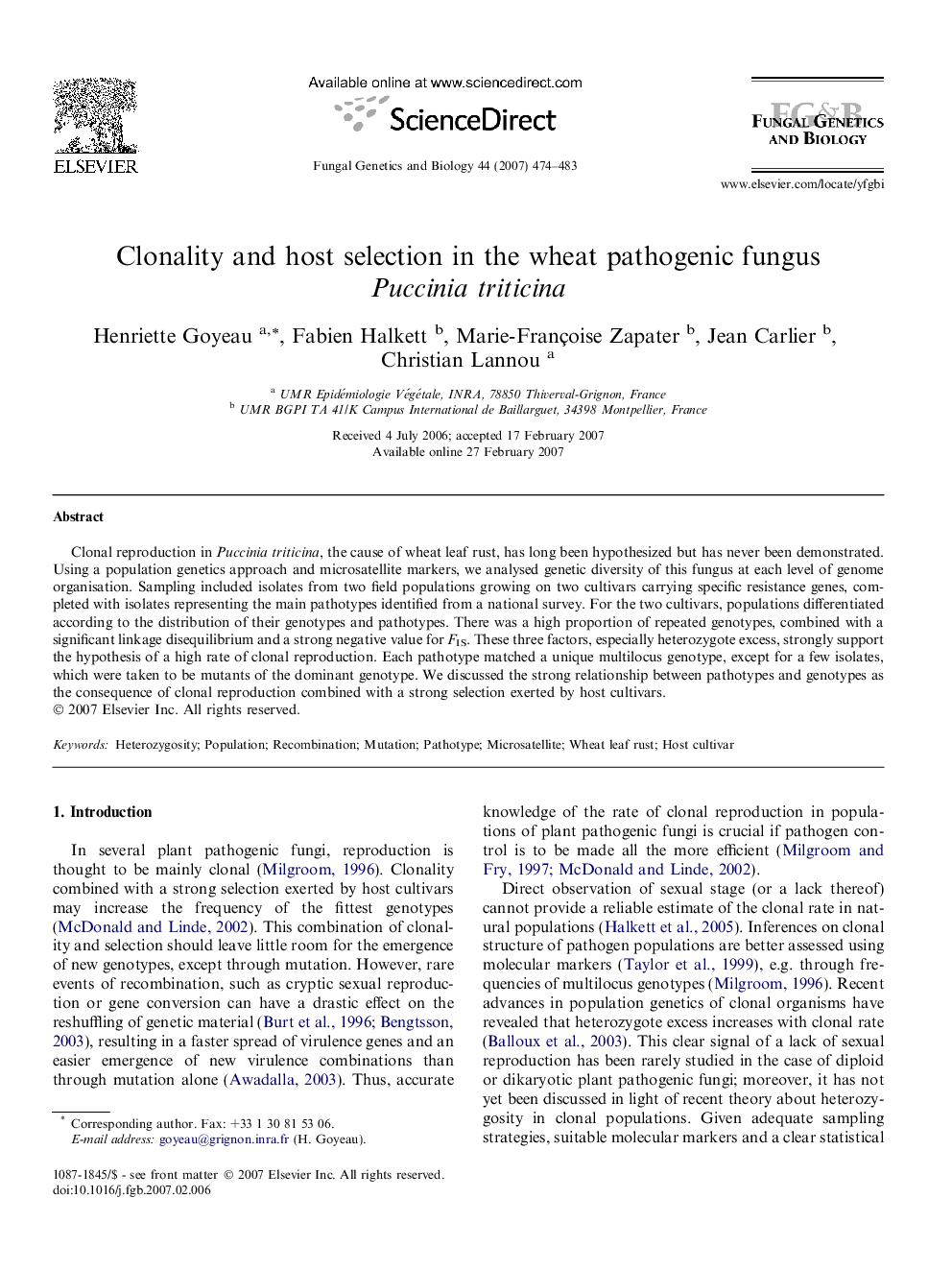| Article ID | Journal | Published Year | Pages | File Type |
|---|---|---|---|---|
| 2181685 | Fungal Genetics and Biology | 2007 | 10 Pages |
Clonal reproduction in Puccinia triticina, the cause of wheat leaf rust, has long been hypothesized but has never been demonstrated. Using a population genetics approach and microsatellite markers, we analysed genetic diversity of this fungus at each level of genome organisation. Sampling included isolates from two field populations growing on two cultivars carrying specific resistance genes, completed with isolates representing the main pathotypes identified from a national survey. For the two cultivars, populations differentiated according to the distribution of their genotypes and pathotypes. There was a high proportion of repeated genotypes, combined with a significant linkage disequilibrium and a strong negative value for FIS. These three factors, especially heterozygote excess, strongly support the hypothesis of a high rate of clonal reproduction. Each pathotype matched a unique multilocus genotype, except for a few isolates, which were taken to be mutants of the dominant genotype. We discussed the strong relationship between pathotypes and genotypes as the consequence of clonal reproduction combined with a strong selection exerted by host cultivars.
